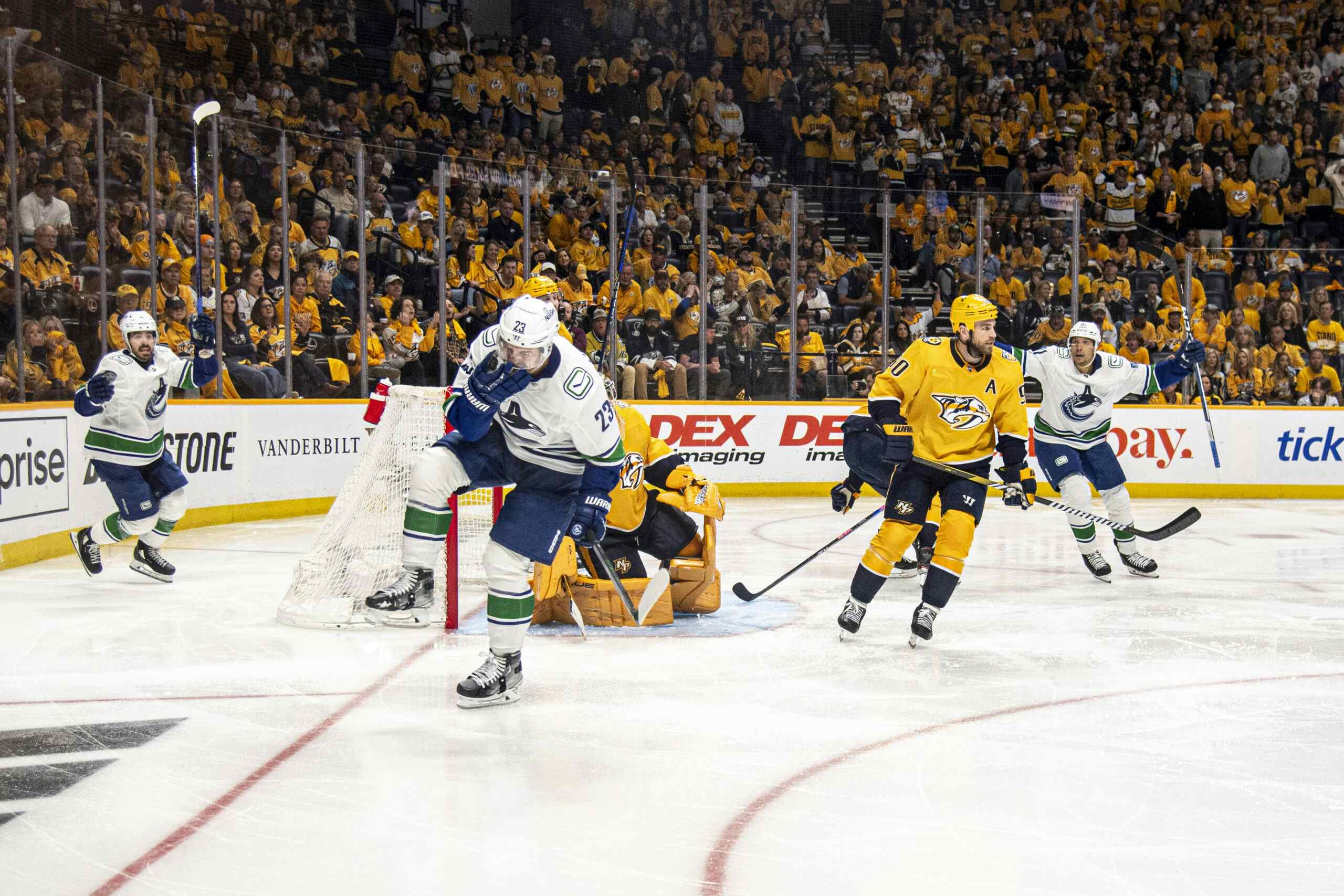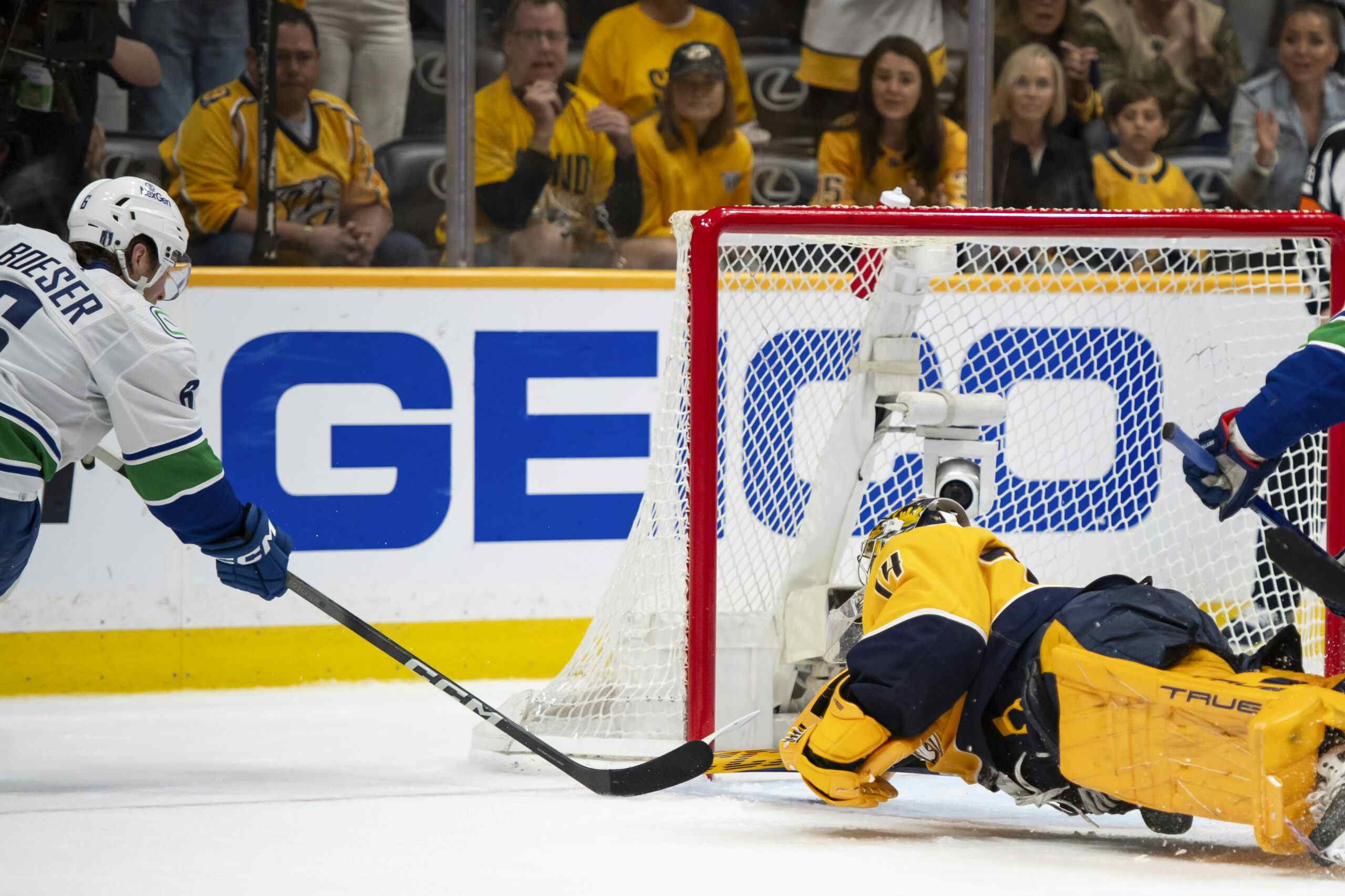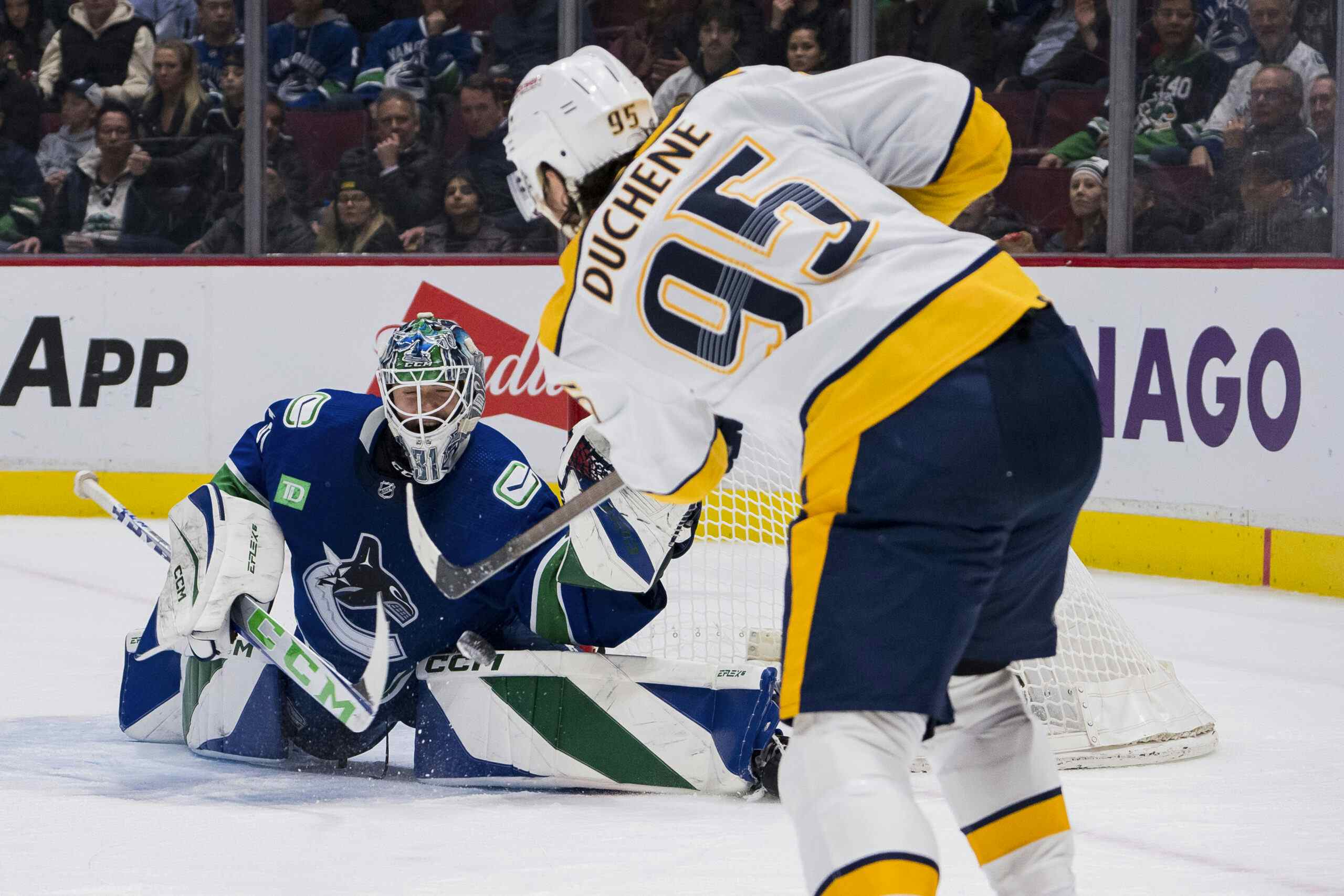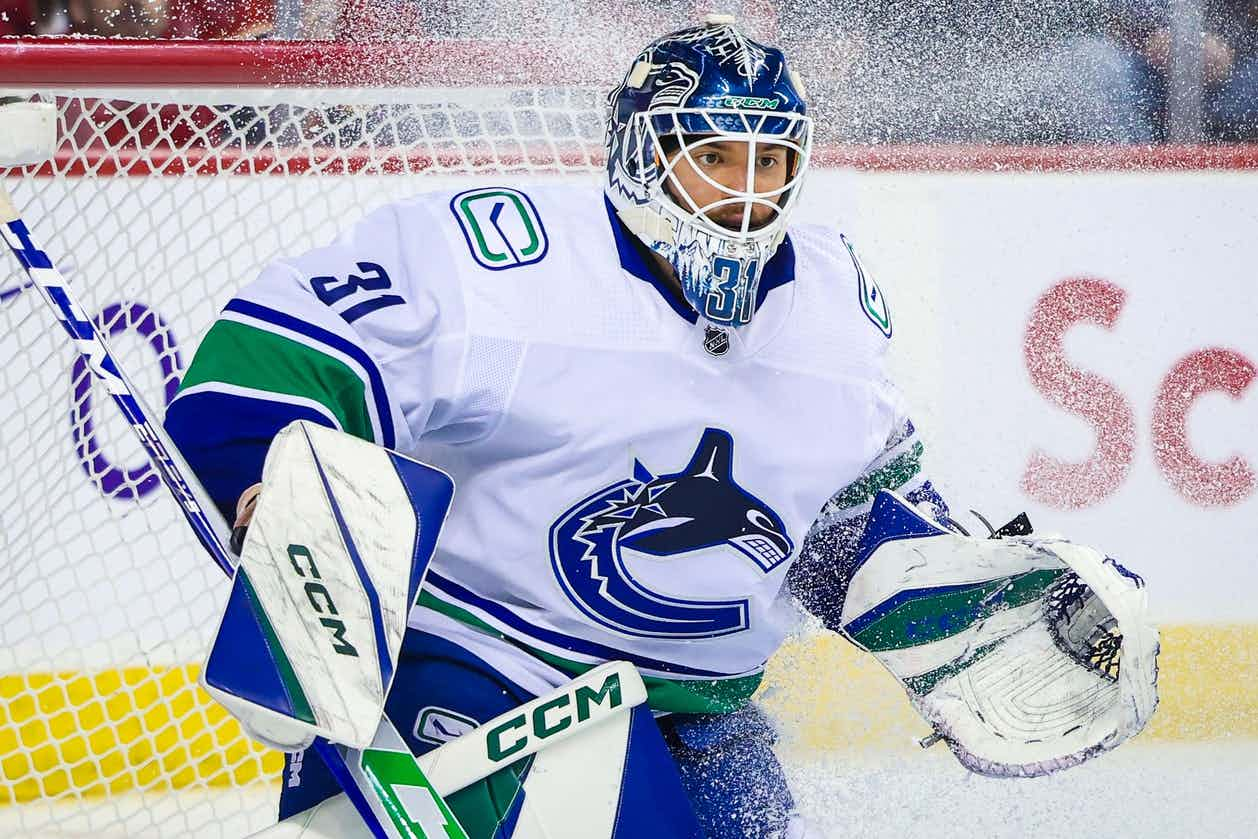Four reasons the Canucks could wait until after the UFA market opens to make a big trade

The 2022 National Hockey League off-season has officially begun.
A week or so after you read these words, the 2022 NHL Draft will take place in Montreal. The first round is scheduled for July 7.
The league’s UFA market will officially open less than a week later. Players like Johnny Gaudreau, Filip Forsberg, Nazem Kadri, and Valeri Nichushkin could be available when the frenzy begins on July 13.
The trading season? Well, that’s technically already started.
Really, it’s a season that never ends. The trade deadline is just a point past which new players cannot be added to a team’s roster for that season. But it’s usually the end of the Stanley Cup Final when teams start wheeling and dealing again in earnest.
The summer of 2022 should be no different. Expect to see plenty of moves in the coming weeks. Just don’t be surprised if the Vancouver Canucks, in particular, hold off on making any big trades until after some of those other important dates have come and gone.
Make no mistake, the Canucks will be making some trades this off-season. There are, however, some key factors to consider that could result in those trades happening later rather than sooner, and, specifically, after the draft takes place and the UFA market opens.
First is the timing of contract negotiations and extensions.
Everyone knows that J.T. Miller is the biggest fish in the Canucks’ trade pond. But while there is and should be significant interest in Miller regardless of his contract status, the Canucks are probably well aware that they’ll receive a greater return for him if the receiving team is able to negotiate a contract extension with him prior to the trade. Without an extension, Miller is just a one-season rental.
The problem? Miller can’t actually sign (or even discuss the particulars of, technically) a new contract until he enters the final year of his current one, which happens on July 13, the same day that free agency officially opens for the summer.
Now, do discussions happen ahead of time every single year? Of course. But no pen can actually be put to paper on a new contract until the frenzy has already begun.
So, those hopes of flipping an extended Miller to New Jersey for the No. 2 pick? Whether or not they were ever realistic from a value perspective, the timing makes the notion an impossibility. That pick will have already been made a week before Miller becomes eligible for an extension.
But if the Canucks wait until after the draft and free agency to dangle Miller? Then, they can offer him with full negotiating rights, free of complication. That’s almost guaranteed to increase their return.
Waiting that long also allows them to start contract talks with — and maybe even sign — captain Bo Horvat. He would be a reassuring piece to have in place with Miller potentially out of the picture.
Speaking of long-term roster planning, there’s another reason why the Canucks might wait to close out their biggest deals until after the draft. Across those two days in early July, the Canucks will aim to add a handful of new prospects to the organization. As of this writing, the Canucks possess six 2022 draft picks (including the No. 15 selection) and they could add more in the coming days.
Those six selections should go a long way toward filling out the barren shelves in the Canucks’ prospect cupboard, but they won’t completely ameliorate the problem. There will still be gaps in the organizational depth chart that will need to be filled.
By waiting until the draft is complete to trade a big fish like Miller (or even a medium fish like Boeser or Garland), the Canucks would give themselves a chance to re-assess their updated needs as a franchise after adding a half-dozen new prospects into the fold.
Draft a couple of highly-touted RHD prospects and suddenly that becomes much less of a make-or-break component in a prospective Miller trade. Select only forwards and goalies? Now you definitely need to get a defenceman back for Miller.
On the topic of those selections, there’s one more bit of draft-related reasoning that could have the Canucks holding off a few weeks to make their major summer moves. Next year’s draft class has been said to be much, much stronger than the class of 2022. The Canucks could value picks from that draft higher than they do those from this year, and there isn’t the same rush to acquire them.
Our fourth, and final, factor at play is one that might seem counterintuitive at first, and has to do with the trade market itself.
We’ve written in the past about how the market for Miller and others might open up this summer beyond where it was at the 2022 trade deadline. At that point, there were only a handful of teams truly contending for the Stanley Cup.
But in the off-season, you can convince any number of organizations that they’re just a J.T. Miller away from competing. Combine that with the greater roster and cap flexibility of the summer, and you’ve got a larger stable of suitors competing for the services of Miller (or anyone else the Canucks might throw on the block).
That being said, whereas the market has grown in one sense, it has diminished in another. A team that was interested in adding a genuine top line scorer to their roster at the trade deadline was faced with limited options. Heading into this summer, however, that’s no longer the case.
Anyone interested in trading for Miller could first explore signing a UFA like Gaudreau, Kadri, Forsberg, or even Evgeni Malkin. They could also explore trading for someone potentially a little cheaper than Miller, like Vladimir Tarasenko or Mark Scheifele.
Over time, those options will become limited again as free agents are taken off the market and trades are completed. When the dust settles, if they’ve timed it right, the Canucks’ front office should be left with a group of teams — ideally, a bigger one than at the deadline — who are still interested in adding a player of Miller’s calibre.
That should, in turn, lead to the maximum possible return for the Canucks via the optimal balancing of supply and demand on the trade market.
Of course, all of these factors could be rendered moot by another, much simpler factor: the 2022 NHL Draft itself. If the Canucks have an opportunity to acquire a pick at the very top of this draft, they won’t pass up the opportunity to add a player like Simon Nemec or David Jiricek. They’ll do it without worrying about how they might have been able to maximize their return at a later date.
Alternatively, if they’re sitting there in the middle of the first round and notice a player who they really like is slipping, they might close out a deal for an extra pick — the possible reasoning being that a bird in the hand is better than a bird next year.
But if the best possible return is what the Canucks are after this summer, they’re probably best served to wait until mid-July to make their biggest trade swings.
Fortunately, the Vancouver fanbase is renowned for its patience …
- Report: Agent for pending RFA defender Ethan Bear makes initial contact with Canucks
- Sedin twins, Luongo announced as 2022 Hockey Hall of Fame inductees
- Roberto Luongo deserves to enter the Hockey Hall of Fame before the Sedins
- Skilled forward Brad Lambert could slide after a tough year: Realistic draft options for the Canucks at 15
- Three Canucks players who will bounce back next year (and two more who present curious cases)
- Canucks sign Kamloops Blazers captain and former Lightning draft pick Quinn Schmiemann
- Jim Rutherford says “it may not make sense for both sides” for the Canucks to extend J.T. Miller, and he’s right
- Patrik Allvin on Ryan Johnson’s promotion, Andrey Kuzmenko, and why the Canucks hired Dale Tallon
- Jonathan Lekkerimaki arguably has the best shot in the draft: Realistic draft options for the Canucks at 15
- Where should Andrey Kuzmenko play in the Vancouver Canucks’ lineup?
- Analyzing 8 free agent defencemen to determine if there’s a good fit for the Canucks
Recent articles from Stephan Roget





